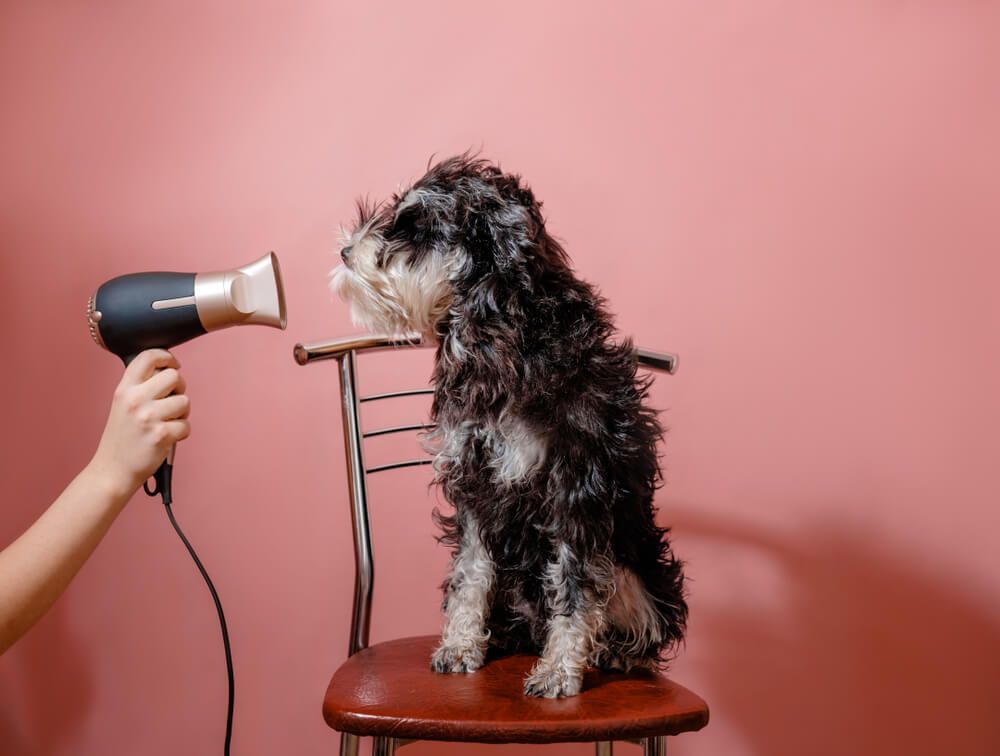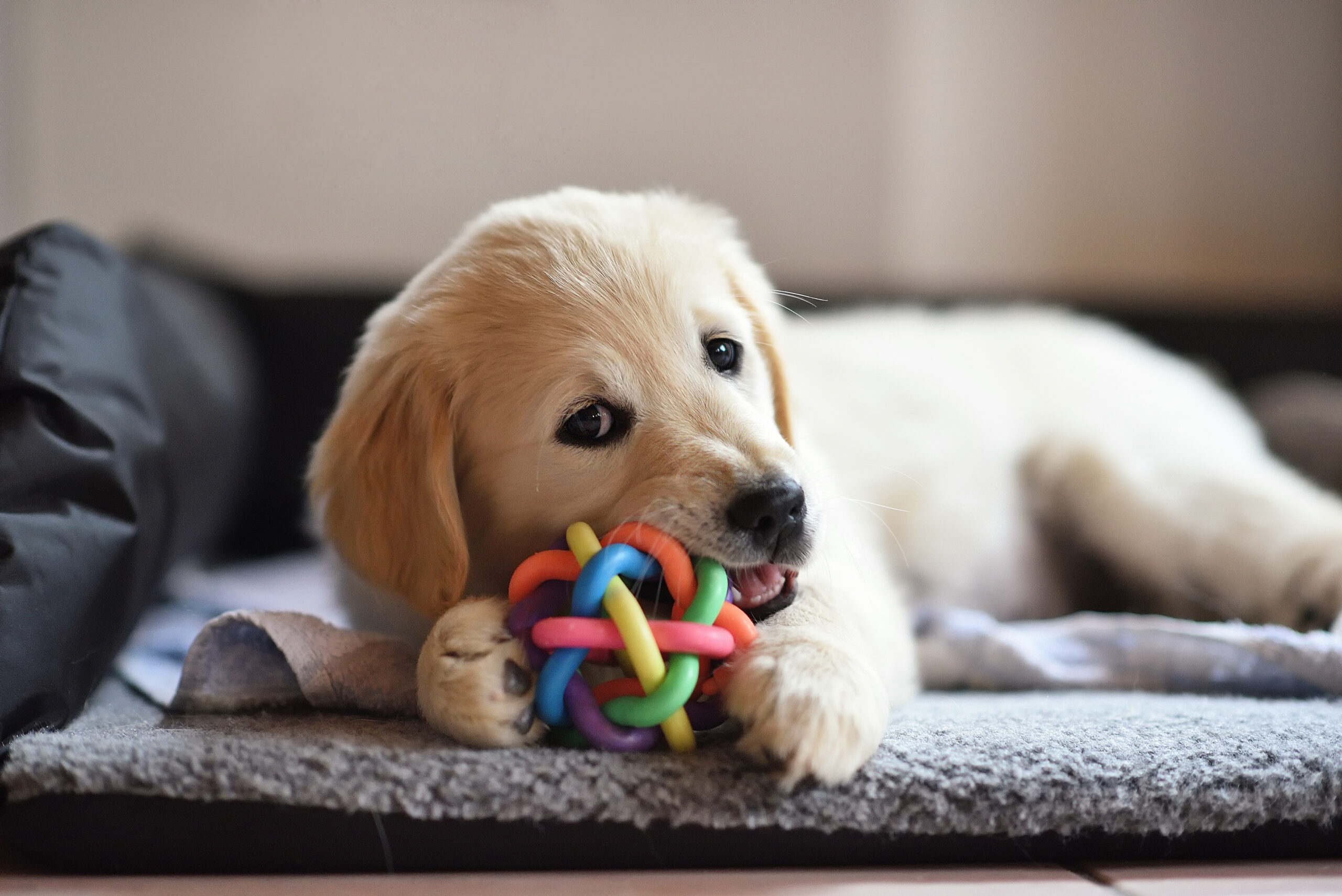Hey Ollie blog readers! We’re offering you an exclusive 60% OFF your starter box! Try now!
Whether your pup has a big, crazy, curly coat, or is naturally more close-cropped, you’ll need to eventually invest some time and money into proper grooming.
Not only is a well-groomed dog cuter and cuddlier, but keeping that coat trimmed can be key to the health and happiness of your pup as well, not to mention it cuts down on the time you spend sweeping the floor and picking hairs off the couch.
Even if your dog is one of those short-haired or “hair-free” breeds, you’ll need to orchestrate a grooming session now and again. The question is: how often, and to what extent?
Today we’re exploring the topic of dog grooming from top to bottom, and we aim to give you the basics for dealing with the various types of coats and fur in the canine kingdom.
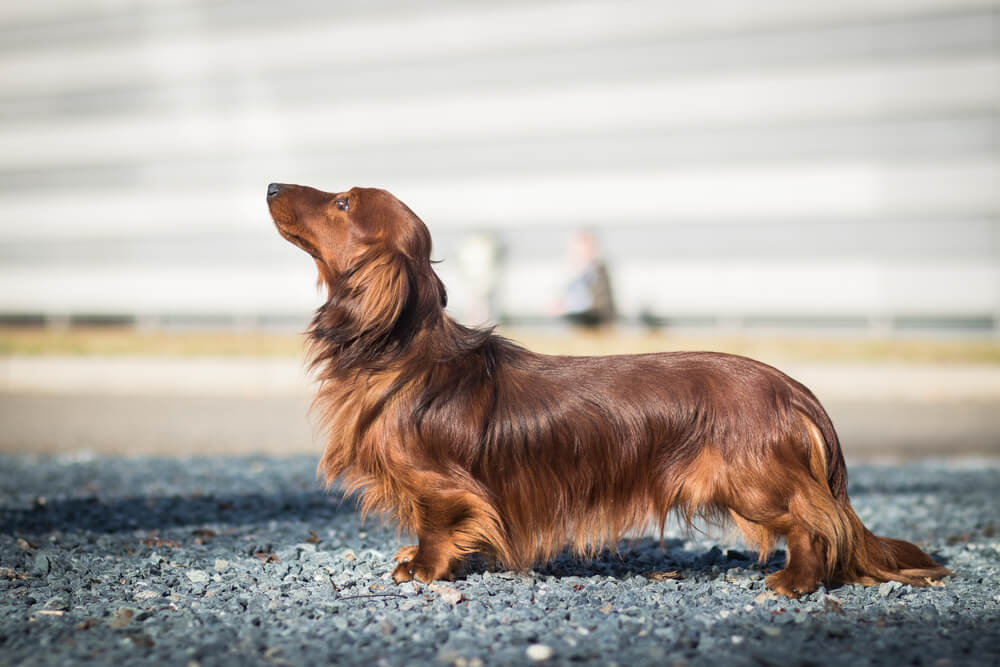
Coat Characteristics
Your approach to grooming will depend mainly on your dog’s coat, and every breed has a unique set of features for skin and fur.
According to Old Farm Vet, short-haired dogs need the least amount of maintenance, since they are less likely to collect dirt and their coats don’t become matted as easily.
The easiest way to categorize coat is by length, so here is the basic breakdown:
- Short hair is mostly self-regulating, meaning you won’t have to groom more than once every season or so. Investing in a strong doggie hairbrush is really all you need, and an occasional wash down with shampoo can help too.
- Medium hair needs more attention, and consistent brushing is just one piece of the puzzle. You may need a small pair of clippers to trim things down during hotter months, and a different type of shampoo is required for complete cleaning.
- Long hair will need to be brushed at least twice a week, and more frequent washing is necessary to avoid skin problems and funky smells. If you can afford it, professional grooming every couple of months is the way to go.
Why brush so often? Even short-haired dogs are constantly shedding their coats, and brushing will help keep it in prime condition. Proper maintenance will also prevent the buildup of bacteria and ensure that the follicles are stimulated for replenishment.
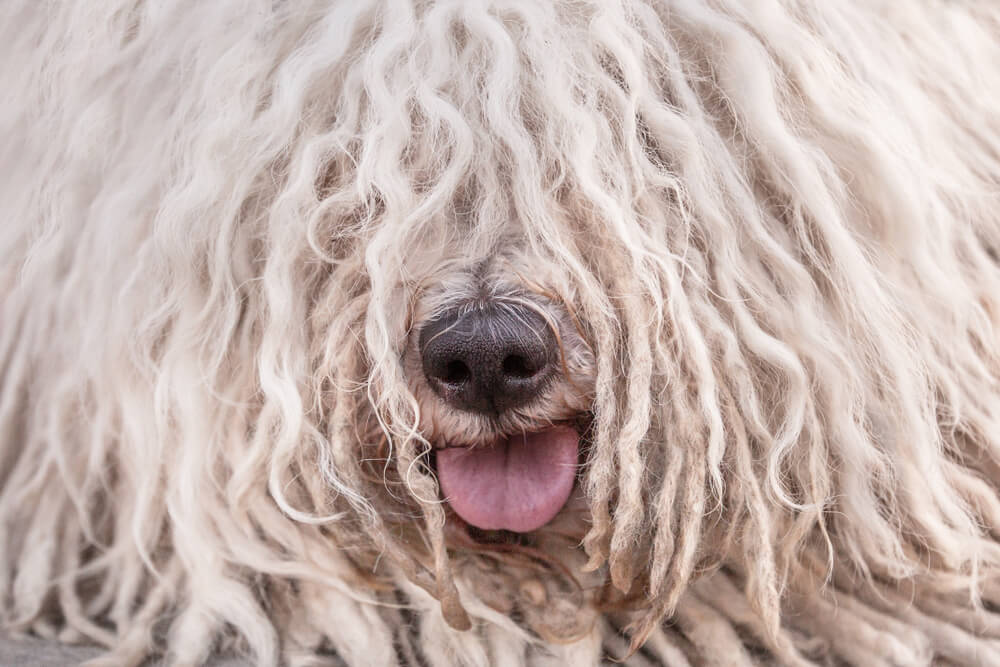
There are also additional coat types that don’t fit these typical categories, each of which requires their own protocols.
- Double-coated dogs have two distinct layers in their coat structure which warms them up in winter and cools them down in summer. You’ll need to be extra diligent with that brush or schedule extra grooming sessions to avoid that wet dog smell.
- Corded hair dogs are those dreadlocked pups with wild locks, but taking care of them isn’t that tough. You should wash them down regularly and simply use your fingers to undo their knots like tangled yarn. Avoid the heavy-duty brush on these guys.
- Curly hair pups like poodles and the Bichon Frise can suffer major matting and tangling if you don’t stay on top of grooming. Very light brushing is the way to go, and specific spray conditioners are available to make the process easier.
- Wiry coats are found on a lot of smaller terriers and are among the most simple to care for. Just run a brush through the coat now and then to undo tangles and make sure dead skin doesn’t linger.
These are still broad categories, and dogs may even have a combination of these coat characteristics.
If you think your dog is somewhere in between, just ask your vet or groomer about their ideal protocols and take it from there.
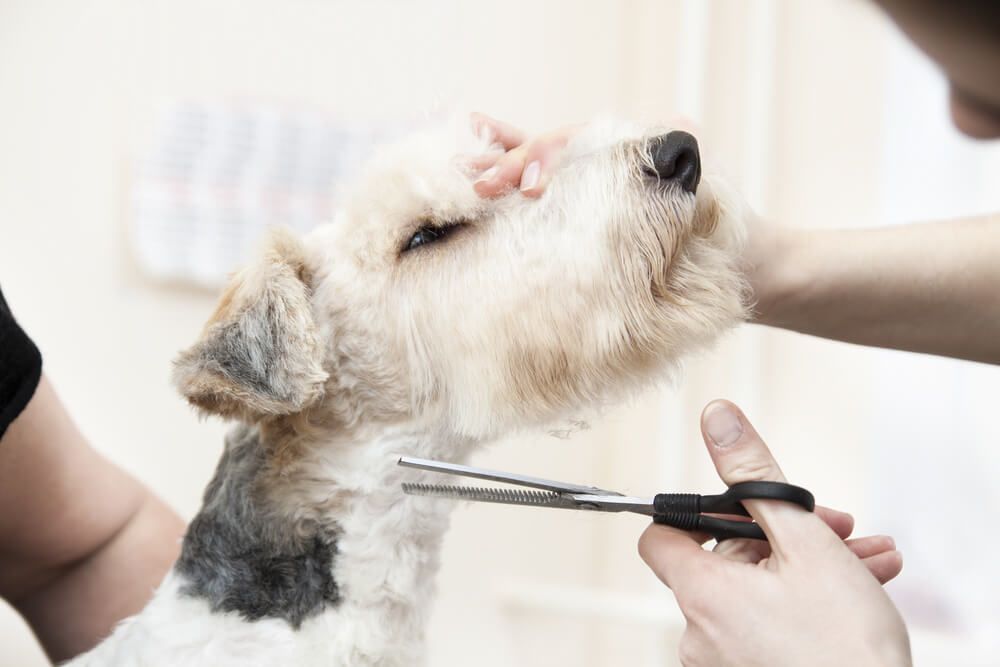
When to DIY and when to head to the groomer
It may seem like an intimidating process to groom your dog, especially if he or she has a lot of thick and unruly hair. But, if you know the grooming basics, you can accomplish a lot with the right tools and techniques, and it is always more fulfilling to do it yourself.
We mentioned earlier to pick up a dog brush, which should have a slightly serrated edge that sweeps away excess hair while removing the layer of dead skin cells on the coat. It may not look like the most comfortable process, but dog owners know that nearly every pup finds it enjoyable. It’s like getting a deep and satisfying scratch they can’t do on their own!
Also, look into the specific shampoos and conditioners meant for your breed of dog since each one is formulated for a deep clean and healthy coat. You’ll be tempted to go overboard when picking up products at the pet store, but stick to the basics and you’ll be 90 percent of the way there.
For that last extra bit of grooming, which often involves more precise trimming and tending to the less-cute areas of the dog, it’s wise to seek the services of a pro. Doggy nails, for example, are not easy to cut, and if you don’t know what you’re doing you can do more harm than good.
Dog grooming is a big business, and you can take your pup to a brand-name store or support local companies that will give your dog some extra TLC. At a bare minimum, try to take your dog in for professional grooming at least a few times a year. It is not crazy expensive and it will seem like you have a brand-new pup each time. Many services will also do house calls, meaning you can chill out while your dog gets the celebrity treatment! Plus you can pick up some techniques from the pros if you stay tuned to the process.
We get it, not all dogs love going to the groomers. If your pup is among these scaredy cats, we’ve got some tips for taking the doom out of grooming day.
What to look out for
Even if you stick to the vet-suggested seasonal grooming schedule we discussed above, you’ll need to keep an eye out for some of the common issues that tend to affect doggie coats, no matter their age, size, or breed.
Here are a few of the biggest problems that affect doggie coats, and what to look for:
- Dandruff is clearly visible and usually happens in winter. It can be a sign of infection or just a lack of brushing. Diets rich in omega 3 fatty acids have been shown to help.
- Ticks and fleas are an age-old problem for dogs and can drive them crazy if you don’t address them quickly. Over-the-counter products are available and are easily applied directly to the coat or taken orally every month or so.
- Allergies impact dogs’ health just like humans. They can be environmental (poor air quality, dirty water) or from food. Consult a vet quickly if you see excessive scratching or strange behavior, and you can switch up diet or medication if needed.
- Folliculitis and mange tend to result from bacterial infections and can be hard to spot on longer haired dogs. Patchy hair is something to watch for, and you should tell if your dog is visibly uncomfortable. Again, it’s key to catch this early on for proper recourse.
As an observant and diligent doggie parent, you’ll know when something is out of the ordinary with your dog’s coat.
Keep that grooming routine on point and you won’t let anything strange go unnoticed.

Best diet for a healthy coat
While medications can help reduce the symptoms of many common coat-related issues, they don’t address the root of the problem. Supplements can provide minor improvements as well, but at the end of the day, a proper diet will be what gives your dog the healthiest coat possible.
Ensuring a healthy coat is one of the reasons we founded Ollie, a service that delivers customized, nutrition-packed doggie meals directly to your door. Not only do our ingredients contain all the necessary proteins, fats, and essential nutrients that contribute to coat health, but the meals are always fresh and dogs absolutely love the taste.
The truth is that most of the store-bought dog food found in huge stocky bags does not deliver the goods in terms of key building blocks for a healthy coat and good nutrition in general. It’s the same old story for most of the pet-store products: too much corn, too much gluten, not enough good fats or proteins. As health-conscious humans know, this is not a macronutrient breakdown that helps us keep healthy skin, hair, and nails.
Higher quality food means a healthier coat, simple as that!
Final notes on caring for your pup’s coat
You don’t need to take your dog to the groomer every week to keep them healthy and happy. Far more important is your own diligence and commitment to maintaining your dog’s coat, and making sure you stay on top of any mysterious developments or behaviors.
Stick to the fundamentals of brushing and washing, and of course, feed them the best possible food to ensure health inside and out.
The Ollie blog is devoted to helping pet parents lead healthier lives with their pups. If you want to learn more about our fresh, human-grade food, check out MyOllie.com.
Tagged As:

The nutrition your dog needs,
the food they want.

Enjoying our articles? Subscribe our Newsletters and get new articles directly to your inbox
You might also like
13 May 2025
8 MINS READ
Puppy Training Guide & Behavior Timeline
Bringing home a puppy is pure magic. It’s also pure chaos—tiny teeth, zoomies, accidents in the house, and moments that make you wonder if you’re raising a future genius or a tiny tornado. …
by Ollie Pets
10 May 2025
12 MINS READ
New Puppy Checklist: Guide To Prepare For A New Dog
Bringing home a new puppy? This checklist covers everything new dog owners need—from essential supplies to training, feeding, and first vet visits.
by Ollie Pets
3 April 2025
9 MINS READ
Home Remedies for Fleas on Dogs: 10 Natural Ways That Actually Work
Wondering what kills fleas on dogs instantly and naturally? If your pup is scratching like crazy, it may be time to take action. In this guide, we’ll show you the most effective home remedies for…
